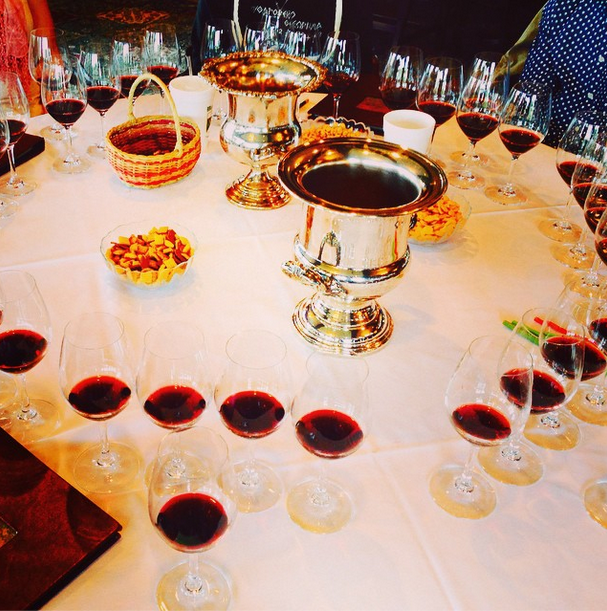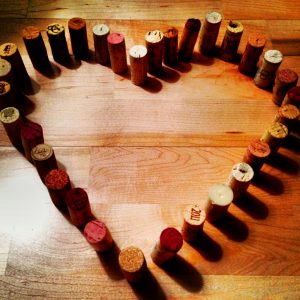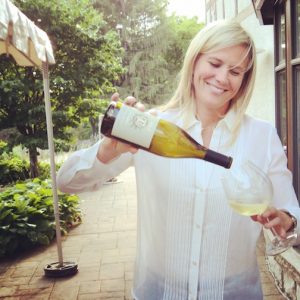Wine Lingo Cheat Sheet!

Wine Lingo Cheat Sheet!
Wine, vinho, vin, wein. No matter how you say it, or which region of the world it comes from, we all know it, and we all LOVE it! Wine is the perfect beverage for any occasion…at least we think so, however this sumptuous drink we all love can be quite daunting at times. Don’t fret. Whether you are trying to impress your friends, date, clients, ordering at a fancy restaurant, or simply want to increase your knowledge on the wine lifestyle and lingo, Amusée has you covered.
Here is our “Wine Lingo Cheat Sheet!”
First things first we are no Iggy Izalea so we won’t get too fancy…let’s start with the most important list of vocabulary, those in relation to TASTE..yum!
Taste
Acidity: Refers to the crispness or refreshing taste at the end of wine. Acidity is generally more commonly detected in white wines than red wines.
Astringency: Can, most commonly, be found in red wines. In some cases, it is desirable to have a touch of astringency. This has to do with how much the wine you are drinking makes you pucker, and this is a result of the amount of tannin in the wine, how much it absorbed from the seeds, stems and skin.
Balance: Balance is simple. It is simply when a wine is smooth and harmonious, and not one flavor sticks out among the rest. Different flavors should balance each other, for example: acid should balance against sweetness.
Body: Is referring to the weight of a wine in your mouth, how thin or thick does the wine feel (skim milk, 2% or whole milk kind of feeling)? Things that affect the body of a wine: grape varietals, alcohol content and age of the wine.
Bright: It may seem as though bright is in reference to sight, but it has to do mainly with how the wine tastes in your mouth. The higher the acidity, or fresh wines, the brighter the wine is. (Keep in mind, that ‘bright’ can sometimes refer to the ‘clarity’ of a wine if you are technically analyzing a wine’s color.)
Corked: Is a no no with wine, it means the wine has been affected by TCA. Trichloroanisole (TCA) is the natural compound that at higher levels can impart “musty” flavors and aromas to wines, other beverages and foods. Wines that contain TCA at a detectable level are described as either being “corked” or having “corkiness.” Cork is a major source of TCA in bottled wine, although experts indicate that TCA in wine may be derived from sources other than cork, such as from barrels or other sources of wood. TCA does not pose a health risk to consumers. Therefore, when a server at a restaurant pours you a glass to taste from the bottle you ordered, they are making sure the wine you ordered isn’t corked. When you taste a corked wine it has a musty and dry after-taste like wet cardboard. It is okay to ask your server to reopen a new bottle.
Earthy: This is used to describe wines that do not have “fruit-forward” flavors. So flavors such as soil and wet grass….yes we mean DIRT (yum). These flavors are typically found in red wines. Remember, dirt is a good thing!
Finish: This can also be referred to as the aftertaste a wine leaves in your mouth. The better quality wines tend to have a longer finish, that is rich, complex and flavorful.
Flabby: Generally this the word we give to a wine that is lacking ‘acidity’.
Fruit-forward: It’s simple, wines that are leave a more fruit driven taste on your palate and have a fruit forward sense of aroma. Some adjectives to describe fruit either name the actual fruit names or can be described as ‘fresh’ or ‘ripe’.
Oaky: Has to do with the flavors of a wine that has been passed on by the oak barrels in which wine is stored and aged. This can be both a positive descriptor, as oak can impart gorgeous aromas of nutmeg, cinnamon, all-spice, caramel and toast. Yet it’s important that wine drinkers also understand when a wine has been negatively ‘overtaken’ by too much oak masking the natural fruit flavors of the grapes themselves.
Oxidized: The oxidation of wine is perhaps the most common of wine faults, as the presence of oxygen and a catalyst are the only requirements for the process to occur. Oxidation can occur throughout the winemaking process, and even after the wine has been bottled due to improper storage. This fault can leads the wine to a loss of color, flavor and aroma – sometimes referred to as leaving the wine ‘flat’. Aha, but wait! Oxidization is a GOOD thing in both Sherry and Madeira. (Take one of our fortified classes for more!)
Palate: It’s simple, it describes the flavors and complexities of a wine on your tongue and within your mouth.
Tannins: Tannins are a biomolecule found in leaf, bud, seed, root, and stem tissues. These guys add structure to the wine’s taste. They are primarily found in red wine as the juice spends more time in contact with all of these elements during the fermentation process. It is what makes one pucker at the bitterness of a wine, however, some tannins are desirable. Remember, this is one of the major reasons we DECANT wine. To soft young tannins in wine, making the wine more silky and smooth in texture. An aggressive amt of tannin can be referred to as ‘chewy’.
Vertical Tasting/Horizontal Tasting: Stay with us on this one…Vertical Wine Tasting is the same wine type, from different vintages (years), from the SAME winery are tasted in the tasting. Vertical tasting is to emphasize the differences age has on wine. In contrast, horizontal tasting are the same wine types, all from the same year but different wineries. Emphasizing the differences in wineries and handling of the wine.
Sight
Legs: When a wine is swirled, it leaves behind drops that slide down the side of a wine glass, due to an evaporation process, those droplets can be referred to as: the legs, the tears or the curtains. The higher the alcohol content in a wine, the thicker the droplets form on the side of your glass.
Want to learn more about what the color of your wine is telling you? Check our most recent post regarding ‘the sight’ of wine HERE.
Smell
Bouquet: Refers to the smell of a wine based on its aging process. A mature wine will have a complex bouquet compared to a recently fermented wine.
Nose: The smell of the wine in the glass.
Aroma: Is just what it sounds like. It refers to the overall smell of the wine. It specifically has to do with the smell of the particular grape varietal. This phrase is used more often in younger wines.

Handling/Structure
Aeration: Allowing oxygen to mix with the wine, and you mostly do this with reds. Why do you do this? Doing this will not only allow the wine to warm up to room temp, but it will also allow the aromas to open up and the flavors to to soften, simply making it taste better. How do you do this? The best way to do this is to use a decanter, or simply pour it into your wine glass, swirling it or letting it sit amongst oxygen.
Appellation: A legally defined and protected geographical indication used to identify where the grapes for a wine were grown.
Blend or Cuvée: Refers to what the wine is made from. A blend can be one grape from a number of different areas amongst the winery’s estate or can be two or more grape varietals blended to form a final wine.
Decanting: It is a process that allows a wine to breathe by adding oxygen. Often times we decant higher quality styled red wines with thicker grapes skins (like Cabernet) to soften the tannins in a younger version of the grape. Decanting can also be used for releasing and separating sediment from an older red wine. Most often this process is done by using a decanter.
Fermentation: It’s the process of converting the sugar from the grape into alcohol and carbon dioxide, essentially turning your wine into an adult beverage. Yeah!
Pip: It’s simply the grape seeds.
Punt: Have you ever noticed the indentation in the bottom of your wine bottle? This is called a punt! Originally the punt was designed as a seam and flipped inside, so the bottle of a wine could stand upright. As history progressed, it was used for wines that throw sediment–the punt helped collect the sediment in red wines as they age. Today, the punt can also be used a ‘marketing tool’. Don’t get fooled by a ‘deeper punt’ — doesn’t necessarily mean the wine is more expensive!
Structure: The more structure a wine has the more layers of flavor you will taste. It is a way to describe the relationships between the acid, tannins and alcohol in a wine. Better structure and a stronger relationship (equally) between these elements often times mean a wine will age better.
Varietal: Refers to the different varieties of grapes such as Pinot Noir, Chardonnay, Cabernet, etc.
Vintage: The year in which the grapes were harvested, that made the wine.

Sommelier: That’s our one and only, Leslee Miller! A wine Sommelier is a French term for Wine Steward, who lives, breathes, sleeps and of course drinks wine. Remember, these days in order to call yourself a sommelier, you must be ‘certified’ by an organization that does so.
Many fine dining establishments world-wide have a Sommelier working their restaurant floors and assisting servers & guests answering whatever questions you may have about wine and their food pairings. Next time you’re in a nicer restaurant, don’t be afraid to ask for their ‘somm’!
Sommeliers also work in the capacity that Leslee does – consulting, writing, teaching and performing wine education classes globally for both consumers and others in her industry.
Want your own ‘pocket sommelier’? Ask Leslee all of your inquiring wine questions at leslee@amuseewine.com and she’ll have you equipped with all the right verbiage you need before the next time you head out for vino!
How bout some wine recommendations to try the next time you’re sleuthing your favorite retail store or restaurant? Follow Leslee’s #certifiablydelish page HERE for her recommendations, pairings and more!
Anything confuse you in our ‘wine lingo’ list? Feel free to send us any questions you may have regarding our ever so long vocabulary list, and remember…#DrinkMoreWine!
#clinkclink
Comments 2
I am the manager for a wine marketing company and would like your permission to give your Wine Lingo Cheat Sheet to my staff of approximately 125 that conduct off premise events for our clients.
You bet, Jim! Go ahead and do so. In fact, send your staff right to my site for more wine info and fun info regarding: pairings, industry trends, grapes, glasses and more! Thanks for asking. Clink, clink!